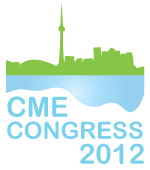Réjean Laprise (CPD Office, Fédération des médecins spécialistes du Québec); Gilles Hudon (CPD Office, Fédération des médecins spécialistes du Québec); Lise Guindon (CPD Office, Fédération des médecins spécialistes du Québec)
SYNOPSIS
This poster reports on key lessons that were learnt over almost 40 years of CME practice and management in the 35 professional organizations that have been providing CME/CPD resources to Quebec’s 9,000 medical specialists. Past and current organizational structures and business models are compared as well as results that were obtained.
Purpose
This poster reports on key lessons that were learnt over almost 40 years of CME practice and management in the 35 professional organizations that have been providing CME/CPD resources to Quebec’s 9,000 medical specialists.
Methods
Past and current organizational structures and business models are compared as well as results that were obtained, using institutional documentation and the reports that were submitted every 5 years to Quebec’s College of Physicians in order to obtain CME providers accreditation.
Results
Though most associations have been offering CME activities since 1974, only a few were able to meet the Canadian Association for CME’s criteria and obtain full accreditation in 1981 when they first sought for recognition as accredited providers. In contrast, all were accredited in 2011. Today, these professional associations have become one of the main learning resources used by Quebec’s medical specialists as a result of the increase in quality of the CME/CPD activities and tools that they offer.
Conclusion
The main factors explaining the increasing success and quality of CME provided by the medical specialist associations are the development of dedicated infrastructures, called CME units, and resources in each association, and the creation of a central CME office at the federation level whose main role is to provide CME units with faculty and staff development, and tools and services that support CME units’ daily activities. Enhancing CME managers and staff expertise resulted in increased CME units stability and in greater use of CME evidence and best practices.
Declaration
The authors do not have conflicts of interests that may potentially influence the presentation of this educational material.





